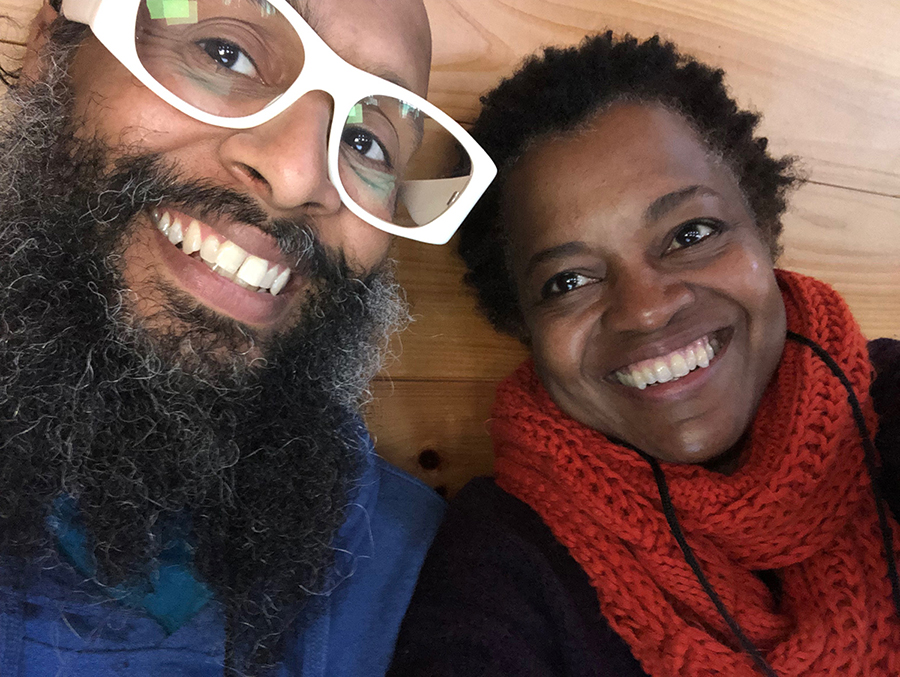One of the most important aspects of our transition to a Worker Self-Directed Nonprofit has been holding the intention to share our process as a set of tools for other organizations looking to incorporate shared leadership into their work. In the post below, you’ll see links to several of the accountability tools we used. These are the first of a series of documents we’ll be adding to our new Public Shared Leadership Resources folder. These tools are a reflection of GWI’s approach to this work, which we readily acknowledge as a work in progress. We invite you into our process, but we recognize that what worked for us may not work for others. We share openly, and encourage you to reach out with questions.
Accountability in a “flat” organization has been a tough nut to crack. Back in 2017, we designed and implemented a framework for accountability that attempted to go around the hierarchy that was then a part of our organization. At the time, GWI had four employees, and while our org chart wasn’t set in stone, we had an Executive Director and there were hierarchies built into the various aspects of our work. Our process took a “360” approach, but without specifically naming subordinates, colleagues, and supervisors as different groups providing feedback. Instead, we all completed the same feedback surveys for all colleagues. There were a number of challenges in this inaugural attempt at accountability, but the main one was that by not naming our hierarchical relationships, we were not being completely honest and transparent. Our roles and ongoing responsibilities to the feedback were not clear, and as a result the work didn’t really stick. Now, GWI really is a non-hierarchical organization, and our roles and relationships with each other and the work are much, much clearer.
Since making the transition to a Worker Self-Directed Nonprofit last year, we have held an intention to bring accountability into our work. This past fall, we decided we were ready to take up the challenge and design and implement our new accountability practice. Working in a three member sub-circle of our Operations Circle, we put together a set of tools and processes that we believe reflect our values and our shared leadership approach. What we designed is an ongoing practice with two engagement points over the course of a year: a primary engagement and an abbreviated version of the same process six months later in order to check in on our accountability work. We recently went through our first engagement, and from start to finish the process took a little over a month and a half for us to complete.
- First, each Worker was assigned an “Accountability Partner,” to serve in a supportive role and help facilitate a Worker through their analysis of the feedback and the crafting of their growth and development plans.
- We then began the Worker review part of the engagement, centered on Worker feedback collected anonymously using the GWI 360 tool. The 360 responses were collected by the Accountability Partners and assembled into a report before being shared.
- Workers and Accountability Partners then had around two weeks to meet, discuss the Worker’s response to the feedback, and think through what goals and strategies the Worker wanted to focus on in response to the feedback. The Accountability Partner’s primary responsibility was to the Worker, with a secondary responsibility to the organization to ensure that the feedback collected through the 360 tool was honestly reflected in the Worker’s report.
- Each Worker then created a Growth and Development plan from a template shared by the sub-circle. Accountability Partners reviewed the Growth and Development Plans, provided feedback and insight aligned with the content of the 360s, and then provided final sign off before sharing with the General Circle. (As a reminder, the General Circle serves as the governing circle for the organization; the container where the Worker Trustees practice our collective role as the Executive Director of the Good Work Institute).
- Once the Worker review was complete, we moved into a General Circle review. After reading through the Growth and Development Plans, all members of the General Circle were able to submit clarifying questions and curiosities in response to a Worker’s plan. We then convened a closing meeting that we called the “Hot Seat / Love Seat Ceremony,” where each worker was able to share their perspectives and respond to questions, and in turn receive gratitude and appreciation from their co-Workers.
We are very much still in a learning space when it comes to our practice, however we do have some initial insights to share. While this was our first attempt at an org-wide accountability practice, the design was initially sketched out at the beginning of the year as we worked to transition a Worker from part-time to full-time. Two Workers, the Worker in transition and their Accountability Partner, bravely and graciously volunteered to serve as the vanguard for our accountability practice, and in moving through the process their core take away was the importance of support. The Worker and their Accountability Partner met several times to process feedback and discuss how the Worker would incorporate accountability and invest in their own growth and development. Hearing about their journey together, the sub-circle decided to deepen our shared understanding of the Accountability Partner role because it was clear how important this form of support was to the practice. We kicked off the first engagement with a collective discussion with the General Circle about the importance of the Accountability Partner, which we then documented in our Roles and Intentions document.
The second insight is that our accountability practice needed to be self-led. Back in 2017, it wasn’t clear who we were accountable to. In providing feedback, were we giving directives? As supervisors, were we supposed to hold subordinates accountable? And who held accountability for feedback given from subordinates to supervisors? These were all questions that we didn’t account for and served as obstacles to authentic, generous feedback. Now, in a non-hierarchical system, it was clear that accountability needed to mirror the values of our shared leadership approach. Each Worker drives their own accountability, both in crafting their own Growth and Development Plan and holding themselves to their commitments over time, while their fellow Workers are tasked with acknowledging and supporting each Worker in their ongoing accountability work.
This core value is baked into all aspects of our current practice, but it was at its most visible in the way we closed this round of our accountability practice with the Hot Seat / Love Seat ceremony. The point of this closely choreographed meeting was to create a shared experience that allowed us to collectively hear and see each Worker’s self-led accountability work, which we believe will strengthen this process and our relationships with each other.
Now that we have completed this first round of our work we are ready to share our process and the tools we created as guidance on how to structure an accountability practice in a non-hierarchical organization. That said, we believe aspects of this work would translate easily to an organization that retains hierarchical roles and systems of management. We are all incredibly proud of the collective work of our team, and excited to move forward in our accountability practice. We believe that transparent, trust-based relationships are the lifeblood of shared leadership, and accountability is key to building and strengthening these relationships. We are open to the lessons that this practice will teach us over the coming year, and we look forward to hearing from other organizations that choose to join us in this work.


